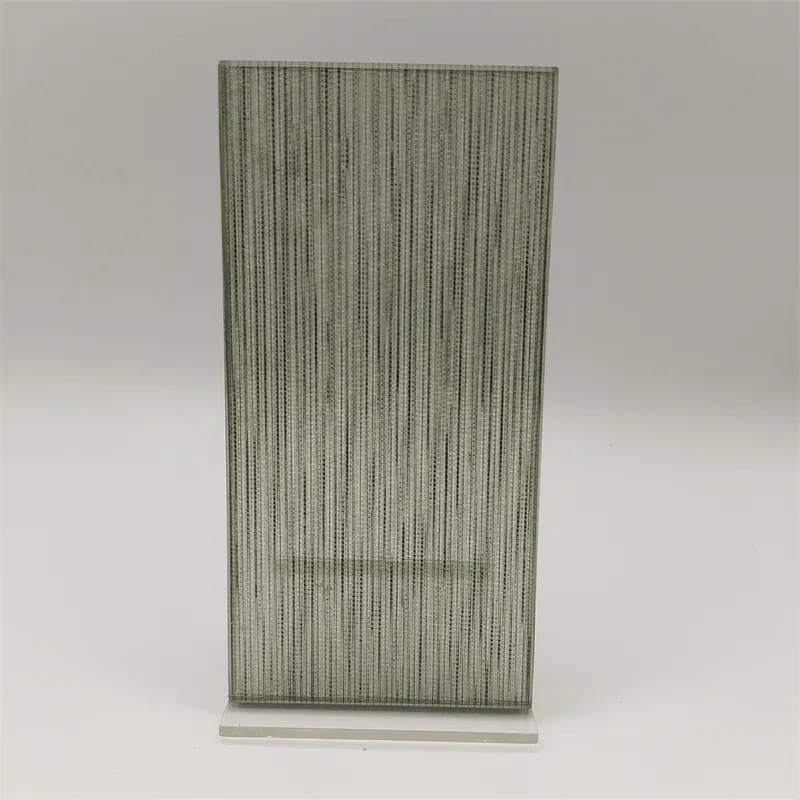10 月 . 11, 2024 02:02 Back to list
infrared reflecting glass
The Significance and Application of Infrared Reflecting Glass
Infrared reflecting glass has emerged as a pivotal innovation in the realm of modern architecture and energy efficiency. This specialized type of glass is designed to reflect infrared radiation, which primarily comes from the sun. By blocking a significant portion of this radiation while still allowing visible light to penetrate, infrared reflecting glass offers numerous benefits in buildings and various industries.
Understanding Infrared Reflecting Glass
At its core, infrared reflecting glass incorporates a thin coating of metallic oxides, which enables it to reflect infrared rays. This technology works on the principle that while visible light passes through the glass, infrared radiation, which contributes to heat, is reflected back outside. This unique property is especially valuable in hot climates, where reducing heat gain becomes critical for maintaining comfortable indoor temperatures.
Energy Efficiency and Cost Savings
The use of infrared reflecting glass in building design significantly enhances energy efficiency. Traditional windows allow both visible light and infrared radiation to enter buildings, leading to higher cooling costs during hot weather. By installing infrared reflecting glass, buildings can maintain lower temperatures without over-relying on air conditioning systems. This translates into substantial cost savings on energy bills, contributing to both economic and environmental sustainability.
Moreover, by reducing the cooling load, infrared reflecting glass lessens the strain on HVAC systems. This prolongs the lifespan of these systems and reduces maintenance costs. As energy efficiency becomes a growing concern worldwide, the adoption of such glass is increasingly viewed as a forward-thinking choice for both commercial and residential properties.
Comfort and Aesthetic Appeal
infrared reflecting glass

In addition to energy savings, infrared reflecting glass enhances indoor comfort. With reduced glare and minimized heat, interior spaces become more pleasant and easier to occupy. This is particularly relevant in office environments where excessive sunlight can lead to discomfort for employees. By creating a more conducive workspace, companies can boost productivity and employee satisfaction.
From an aesthetic perspective, infrared reflecting glass can also serve design purposes. Available in various finishes and tints, it allows architects and designers to achieve the desired look without sacrificing functionality. The sleek, modern appearance of infrared reflecting glass often adds a contemporary edge to building facades, appealing to both clients and occupants.
Applications Beyond Architecture
While the architectural sector has greatly benefited from infrared reflecting glass, its applications extend beyond buildings. Automotive industries have begun to integrate this technology into car windows, improving comfort for passengers while reducing the strain on air conditioning systems. Additionally, infrared reflecting glass finds its place in the electronics industry, particularly in the manufacturing of screens and displays, where glare reduction and heat management are essential.
Furthermore, in the realm of solar energy, infrared reflecting glass can be used in photovoltaic systems to enhance efficiency. By minimizing heat buildup in solar panels, this glass helps maintain their performance and extends their operational lifespan.
Conclusion
In conclusion, infrared reflecting glass stands out as a transformative solution in energy efficiency and architectural design. Its unique ability to reflect infrared radiation while allowing visible light to pass through not only enhances comfort and aesthetics but also contributes to significant cost savings. As the world continues to navigate the challenges of climate change and energy consumption, the relevance of infrared reflecting glass will undoubtedly grow, making it an integral component of sustainable building practices and technological advancements across various industries. Through continued innovation and adoption, infrared reflecting glass will play a crucial role in shaping a more energy-efficient and comfortable future.
-
Wired Glass: A Strong and Secure Glass Solution for Various Applications
NewsNov.04,2024
-
Tinted Glass: A Stylish and Functional Choice for Modern Homes
NewsNov.04,2024
-
The Elegance and Versatility of Silver Mirrors
NewsNov.04,2024
-
The Advantages of Copper Free Mirrors
NewsNov.04,2024
-
Tempered Glass: A Reliable Choice for Modern Applications
NewsNov.04,2024
-
Pattern Glass: Stylish and Functional Glass for Modern Design
NewsNov.04,2024
Related PRODUCTS














